Fifty years ago Toyota introduced what would become the most enduring workhorse the world has ever seen. Though ambitious in name, the HiLux — a portmanteau of the words “high” and “luxury” — was anything but. Utilitarian and austere, it was built to serve the farmers and laborers of Japan, but it became something that not even Toyota could have predicted.
The HiLux was born as a result of Toyota’s alliance with Hino, formed in 1966. At the time, most trucks in Japan utilized a cab-over architecture, with the driver sitting high directly above the engine. As an alternative, Toyota offered several car-based utes riding on Corona and Crown chassis, but as the tastes of Japanese drivers grew mor sophisticated it became unseemly to have your flagship sedan pulling double duty as a work vehicle.
With the alliance, Toyota would focus its resources on passenger cars while Hino dedicated itself to heavy-duty commercial trucks and buses. Conveniently, Hino’s 1961-67 Briska, a small pickup powered by 900cc and 1300cc motors found in the Contessa, was nearing the end of its lifespan. It was decided that Hino would stop building the Briska and replace it with the HiLux. Due to its size the compact pickup would be marketed as a Toyota, but built by Hino at their Hamura factory in western Tokyo.
The goal for the HiLux — and perhaps an explanation for its name — was a pickup truck with a passenger car feel. It’s as if Toyota wanted to reassure buyers they wouldn’t be sacrificing the a Crown’s comfort. As such, Toyota bestowed it with a proper “bonnet” design and backed it up with car-like features in sedan-derived Standard and Deluxe trim levels.
The first generation bore the N10 chassis code, but there were several differences between Japan and US versions. The home market version was initially powered by a Toyota 1.5-liter 2R engine generating 70 PS passing through a 4-speed column-shift manual. The cargo area measured just under 73 inches in length and had a 2,200-pound capacity, but Japan added a long-wheelbase version with a 88-inch bed in April 1969.
The US-spec model, on the other hand, arrived in 1969 with a 1.9-liter 3R offered 90 horsepower and four on the floor with only the short bed option. After just one year on the market, the mill was replaced with a 1.9-liter 8R good for a bump to 106 horsepower.
When Japanese versions had their engines upgraded in the mid-generational refresh to a 1.6-liter OHV 12R putting out 83 PS, Americans got a more advanced 2.0-liter OHC 18R. However, actual horsepower dipped to 97 thanks to tightening emissions regulations.
American HiLuxes had another quirk. US safety standards deemed the slim turn signals integrated into the upper grille too small. So instead, we got large, auxiliary amber lamps mounted on top of the fenders, giving the N10 a charming feature unique to our market and trucks in general.
The second-gen N20 arrived on May 8, 1972, nicknamed the rokuhai (rocket HiLux). US models continued on with the 97-horsepower OHC 18R, but this larger engine engine was offered for the first time on Japanese-market HiLuxes, tuned to 105PS for a long-distance hauler version called the HiLux Highway. In addition to 4-speed column and floor shifters, a 3-speed automatic was offered for the first time.
By 1973, the HiLux had become popular enough that a distinctively American modification began to take place. Fiberglass camper tops built by Chinook Mobilodge turned the HiLux into a camper, and the shells were offered officially by Toyota. In 1974 the long-bed version was added to the US lineup, but the biggest changes came the following year.
1975 added a 2.2-liter 20R which bumped torque to 120 lb-ft, though horsepower stayed the same due to emissions equipment. That year also saw the inclusion of the popular SR-5 trim level, equipping the so-called Sport Trucks with a a 5-speed manual transmission and a slick disco-era decal stripe package. Last but not least, the HiLux name was phased out of the US-market completely, where it was henceforth called, simply, the Toyota Truck.
With the growing popularity of small pickups in America, Toyota saw an opportunity to market the HiLux as something more than just a work vehicle. The third-gen hit Japanese showrooms in September 1, 1978 with rugged styling and the novel idea, imported from America, that a pickup truck could be used for leisure activities. Toyota even offered in Japan a special color and stripe package called the HiLux California, evoking the exotic land known for its beaches, forests and mountains.
A 4WD version joined the HiLux range for the first time in October 1979, offering an 18R engine, lifted suspension, and larger tires and fender flares straight from the factory. In December of that year, Toyota added a diesel engine to the option list. There was even a rare four-door double cab version offered from October 1981 in Japan.
As usual, the US received bigger engines than their Japanese counterparts, but the 2.2-liter 20R that was available from 1979-80 and the the 2.4-liter 22R available from 1981-83 earned a reputation for being indestructible, standouts even among Toyota’s legendary lineup of inordinately durable mills.
US Trucks could be optioned with fiberglass bed toppers, a variety of stripe decals, and our own limited edition packages. Further reinforcing the idea of a fun pickup, choices of camping versions grew exponentially with options from Griffith, Winnebago, and dually fifth wheel extended chassis conversions. And of course, nothing said “fun” like one of the most famous radio controlled cars of all time, the Tamiya Bruiser, which famously pulled a real HiLux ten times its size.
On November 4, 1983 the fourth-generation HiLux was introduced in Japan, boxier in design with brawny, squared-off blister fenders. Customers seeking to build one faced a dizzying combination of options — 2WD or 4WD, regular or Xtra cab, 2.4-liter gasoline or 2.4-liter diesel, short or long bed.
Because of the sheer variety, a number of highly sought-after combos emerged. The 1984-85 4WD models, for example, are prized for being the last year of the solid front axle setup. Toyota went with an independent front suspension for better on-road handling in 1986, but the solid axle remains optimal for off-roading (in order to protect the oil pan).
A turbocharged engine was introduced in 1985, and though the option remained through until the generation’s end in 1988, few buyers checked the box for the 22R-TE, making it rather uncommon and coveted by enthusiasts today. Even rarer were the turbocharged standard cab or 4WD versions, which were only offered from 1986 to 1987, while it remained an option for the 2WD XtraCab until 1988.
A 3.0-liter V6 could be had in both standard and XtraCab versions, but only in 4WD models and only in 1988. By then, Toyota was facing competition from the Nissan Hardbody V6, and included it as a final year option.
The culmination of the HiLux’s transformation from work truck to leisure vehicle came in May 1984, when Toyota added a removable top and rear seats to create the HiLux Surf, or what we in the US know as the 4Runner. It would go on to become a staple of Toyota’s lineup, but it started life as a pickup without a rear wall on the cab. The 4Runner even outlasted the HiLux itself in the US market, but that’s a story for another time.
While we Americans focused on recreation, some parts of the world found use for Toyota HiLuxes for outdoor activities of another kind. By 1987, the HiLux had developed such a reputation for durability and go-anywhere ability that an entire 9-month armed conflict between Chad and Libya was fought using them. Appropriately, it was called the Toyota War. In the roughest, most dangerous parts of the world, the HiLux is the weapon of choice.
Happily, perhaps what the fourth-gen HiLux will be best remembered for is its appearance in 1985’s Back to the Future. Customized with a roll bar, auxiliary lights, and a jet black color scheme, the Truck starred as protagonist Marty McFly’s “dream truck.”
The fifth-generation HiLux went on sale in Japan on September 27, 1988, larger and more muscular in design. The diesel option was dropped for the US, but the stalwart 2.4-liter 22R-E soldiered on alongside the 3.0-liter V6, both stronger engines that what was offered in Japan. Again, short and long boxes were offered, along with 2WD and 4WD drivetrains.
In 1991, US production of the HiLux began at NUMMI, the Toyota-GM joint venture plant in California. Toyota was still importing Japan-built ones, though, and both were sold side by side in US dealerships. The best way to discern the origin is by the VIN, as Japan-made examples will start with “JT” while US-made ones will start with “4T.”
Fifth-gen HiLuxes were also built in Hanover, Germany as Toyota sought to establish a stronger European presence. In a partnership with Volkswagen, the HiLux, though fully designed and engineered by Toyota, was rebadged as the VW Taro.
The Toyota-VW partnership ended in 1997, which is when production of the fifth-generation HiLux ended in most parts of the world. In the US, however, 1995 was the final year of the Toyota Truck. In 1996 it would be replaced by an all-new design tailored specifically for the North American market, the Tacoma.
Subsequent generations of the HiLux became ever more utilitarian, a return to the model’s roots. The sixth generation, introduced in 1997, was divided into two models in Japan, a Sports Pick Up for personal use and the regular HiLux for commercial use.
Starting in 2004, the seventh generation was completely redesigned on a global platform with the express purpose of selling in over 140 different countries. Both sales and production stopped in Japan. Instead, the HiLux would be built in local factories in Thailand, Malaysia, South Africa, Venezuela and Pakistan to supply their respective regions.
2015 saw the launch of the current and eighth generation HiLux. In late 2017, Toyota decided to offer the HiLux for sale in Toyota’s home country again. Since production had moved it had to be imported, and thus the HiLux became the first Thailand-built Toyota to be sold in Japan.
If there’s one thing the HiLux is known for, it’s unbreakability. It’s a reputation that’s almost mythic, and if you need evidence just look at the used truck ads in any city across the country. Sellers routinely ask ridiculous prices, thousands of dollars, for old Toyota pickups with mileages that would have most cars scrapped, recycled into a new car, and scrapped again.
Toyota set out to build a replacement for its utes, but the HiLux became much more than that. It’s persisted far longer than probably Toyota even intended, or they likely would’ve given it a more fitting name. In half a century Toyota has sold 17.72 million of them in 180 countries. Most cars aren’t even sold in 18 countries, but the HiLux has been built in as many. Whether it’s racing in Dakar, working a mine in the Arctic Circle, or surviving the abuse of British television hosts, the HiLux truly has done it all.
Images courtesy of Toyota.


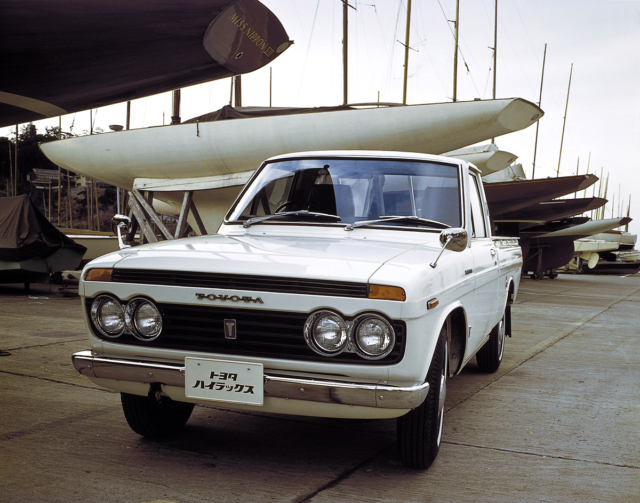


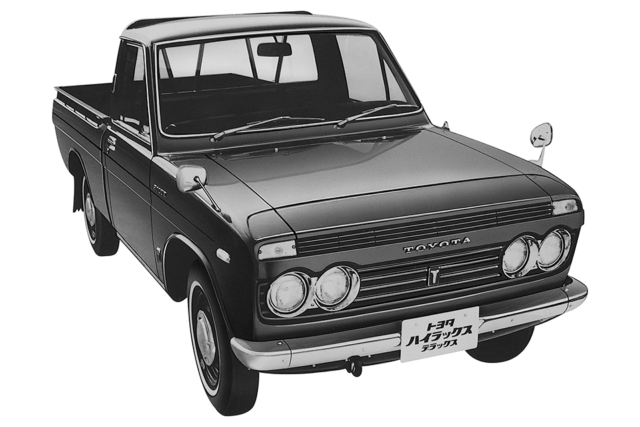




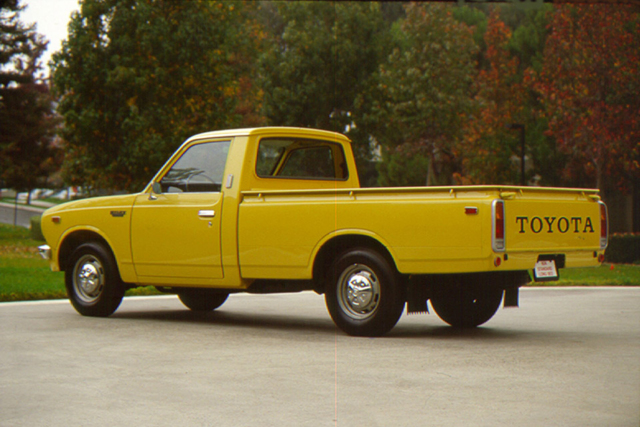

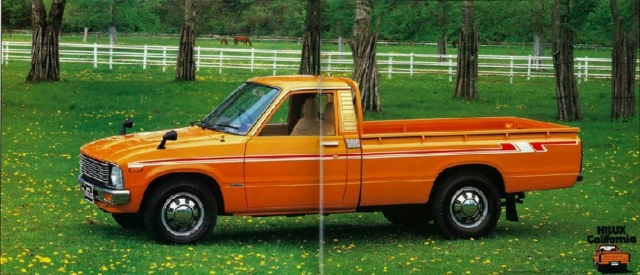


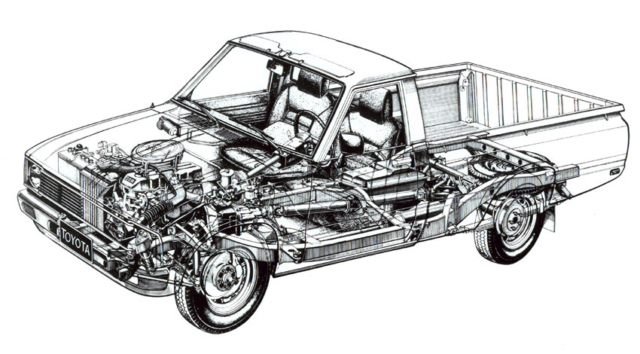



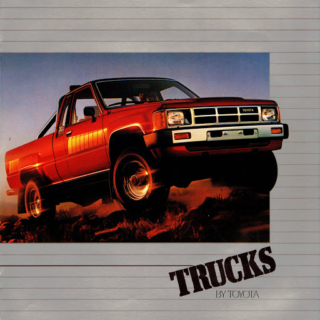

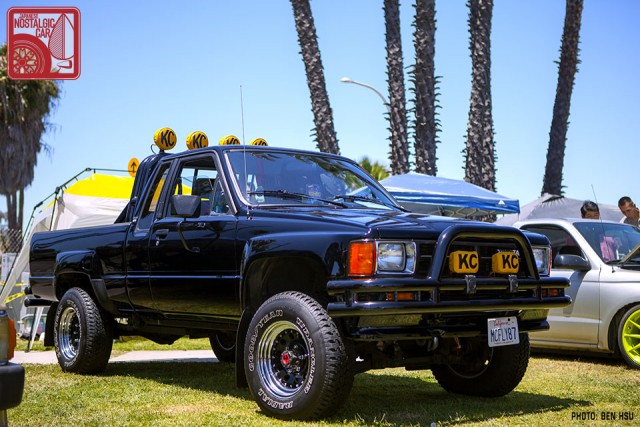
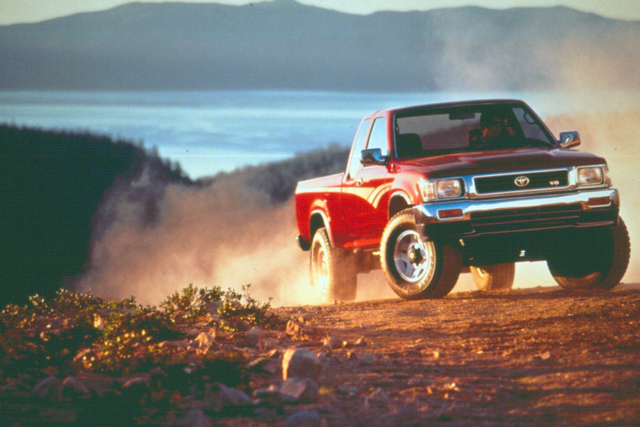
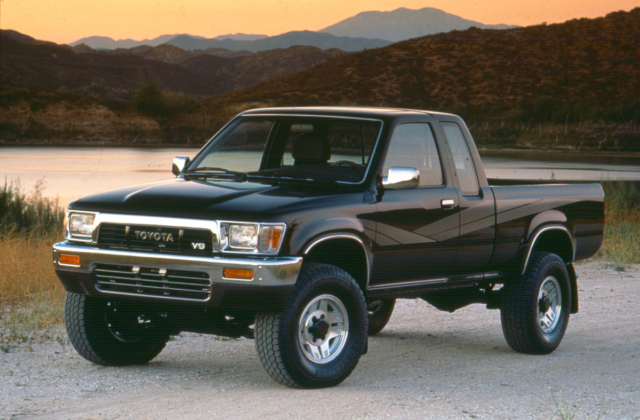



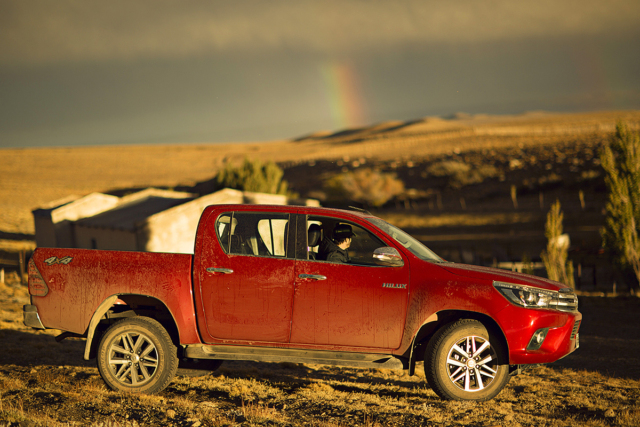
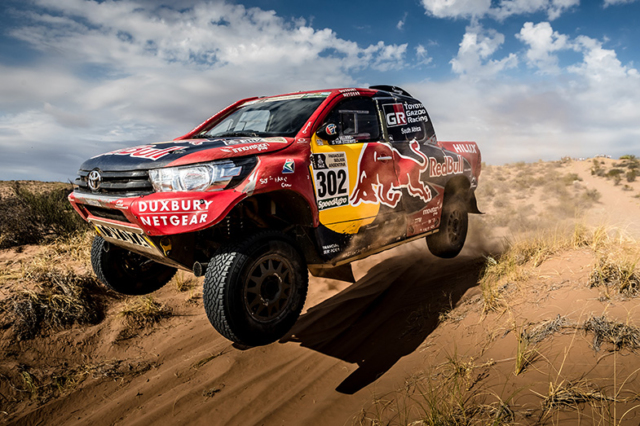
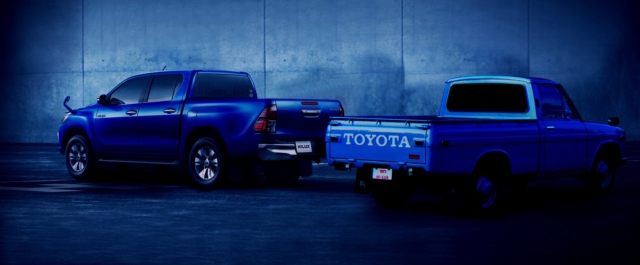
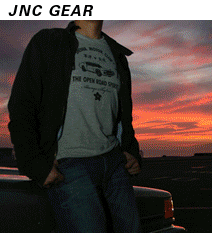
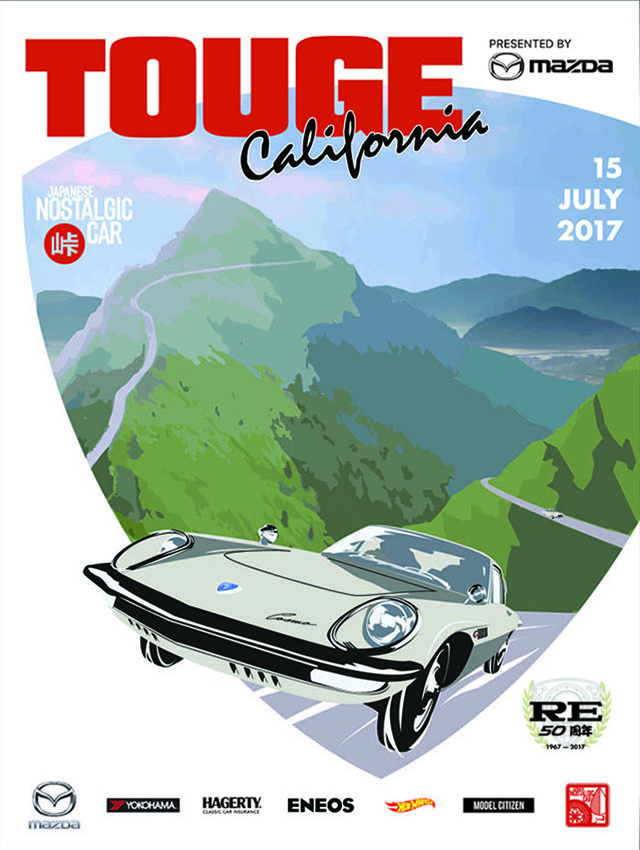
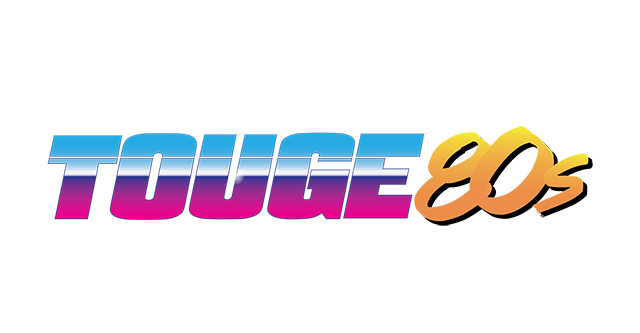

Since 1997 is made in Argentina also.
21 years of pure hard work and sucess. Same behavior of the market, old trucks and high prices, almost a blank check in hand to sale un the used market
Also beat in sales numbers to ford, historic brand leader in the country with the f100 (f150 for the us market) and the ranger or chevrolet.
Vw make the amarok pickup in the country from a few years ago and now the sales numbers is almost equals, more luxury car less truck workhorse. Hilux understood and make many changes in the new generation.
Amarok is nice, but hasn’t really been updated in a long time already. And since we get it from Argentina and there’s a thing between Argentina and Mexico regarding import taxes, Amarok is exageratedly expensive reaching very well equiped (probably even Titanium trim) Ford F-150 prices!!! A fully loaded diesel 4 wheel drive Hilux is available for about two thirds of that roughly speaking. Anyway I’ve always thought VW is so overrated the Hilux, Frontier NP300, Mitsu L200, Colorado and Ranger (which will finally come back to the States) are much more reasonable, have better interior quality (except L200) and are a lot tougher than Amarok as you say.
I own a 93 Toyota pickup, and yes it is a work horse. The odometer stopped working at 187k miles 5 years ago. I know I’m in the 200k miles on that 20r. Great read!
Awesome to be able to understand more about the Hilux, great article guys !
Hilux is a good demand in Asian countries, so much demand as it is top stolen vehicle too!
I just got back from Iceland , swung by Arctic Trucks & saw the red one above parked in the lot out front. The tire pressure placard said 25 PSI for roads, 15 PSI for rough roads, 10 PSI for off road & 5 PSI for snow…?
Best trucks ever! I own a 1969 RN10 Hilux, 1972 RN10 Hilux and a 1989 RHD LN106 4wd. Wouldn’t trade them for any other truck!
“Thus the HiLux became the first Thailand-built car to be sold in Japan” Are you sure about that? The Mitsubishi Mirage (current one) IS the first Thailand-built car to be sold in Japan before the current HiLux…Sorry Sir Ben but I’m very curious about that
You’re right. The HiLux also got a lot of attention in Japan for being a “reverse import” but I forgot about the Mirage. I’ll fix the sentence, thanks!
You’re welcome, as always
Love my ’74 Hi-Lux, it’s a keeper. I bought it from a fellow in Milwaukee, in 2013. It had originally been purchased new by his grandfather, in Virginia, and had spent most of it’s life there. It went to the fellow’s dad, when his grandfather passed over, and he bought it from his dad a few years after. Showed 67,000 miles (5 digit odometer) when I bought it, fellow said it was 167,000, actually, which looked right, looking under the hood, and at the pedal pads. Currently, it’s sitting, the victim of valve float, it’s a four speed, and geared low, could’t handle 75 mph on the Interstate. Didn’t sound like it was revving that high, but I guess it was. It’s getting a full build, with stronger springs, lightweight retainers, stainless valves, slightly hotter cam. It only has idiot lights, except for the temp gauge, so a tach, and oil pressure gauge will be installed too. It’s also getting a 5-speed, to make it a little more highway friendly!
Have ss answer their student books page 98 to review the vocabulary and structures from the units.
I’m trying to fix up my parents 1980 SR5 long bed. They bought it new and it now has over 400k miles. The head has never been off but it is on it’s second transmission. It actually still runs pretty well but lots of small things have stopped working. It basically needs a total restoration, but I’ll never let it go!
Great article! Love the 1979-88 4×4 trucks. Great simple clean styling backed up with world class mechanicals. I think the rarest of these trucks is the 1985 only single cab long bed 4×4 solid axle TURBO diesel. The regular 22RE gas engine outclassed the diesel in horsepower and torque so there were not many takers. Where the diesel did shine was the fuel consumption, getting 50% better fuel economy. The turbo diesel 4×4 was not sold in California but the turbo diesel 4×2 was, go figure. A 4×4 turbo diesel in “not so good condition” came up on craigslist for $10K and was sold within a few days.
I recently sold my blue 1975 SR-5 HiLux that can be seen in the Toyotafest 2016 gallery. Would have loved to restore it, but already have numerous projects in the wings.
One of the best pick-up trucks of the entire hstory.
Looking for spare parts Carn’t find anything on line. Where can one access spare parts. I have a 1985 4×4 petrol hilux with 4y engine. Needing a gearbox + steering parts
I have an all original 1988 garage kept Toyota Pickup with 50k miles. I was wondering what it is worth?
Je suis à la recherche de Toyota Hilux diesel 4×4 un cabine ou 1/2 cabine. Toutes personnes aurait avoir ceux-ci pourrais me laisser un message par email. Merci.